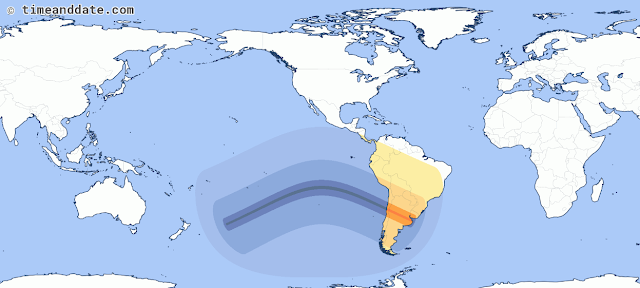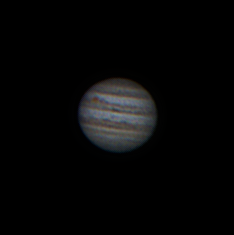There is quite a lot happening in the sky this week and some of it observable from your backyard! Saturn will be in close conjunction with the Moon and, perhaps, the most famous meteor shower peaks this week.
| Event |
|---|
| August 11 | Jupiter Stationary |
| August 12 | Uranus Stationary |
| August 12 | Saturn 0.04°N of Moon |
| August 13 | Perseid Meteors Peak |
| August 14 | Venus in Superior Conjunction |
| August 15 | Full Moon |
The week Jupiter will finish its retrograde motion and once again start to appear to move eastward relative to the background stars. Several hours later Uranus will start its retrograde motion until January of next year. I'm sure astrologers are having fun this week with their 'science'.
Saturn will be in close conjunction with the Moon and, when it sets in Calgary, they will be only a degree and a half away from each other. For those in Australia, you may actually see the Moon go in front of Saturn in what is known as an 'occultation'.
The big news, although I am not really excited about it, is the Perseid Meteor Shower will peak early in the morning on Tuesday, August 13. Why am I not excited? The weather forecast seems to indicate thick clouds and possible rain AND there will a be a large waxing gibbous Moon to contend with. If the sky is clear it will be difficult to catch these meteors as the bright Moon will pollute the sky with light. I've never really been much of a Perseid fan. A great number of mosquitoes, muggy Summer air, overabundance of media exuberance and boring northeastern skies have driven me to the meteor showers of Fall and Winter.
If you are interested, the map below shows where the radiant will be in the northeast sky.
 |
| Perseid Radiant Map |
The basic idea is to find the well known 'W' asterism in the
constellation Cassiopeia in the northeast. Look just below this region toward the constellation Perseus. You should be able to find an assortment of meteors falling to Earth that seem to radiate from this area. The estimate of hourly rates is provided below. As you can see, the further you get away from the city the more meteors you will expect to see.
| City | Suburbs | Rural | Optimal |
|---|
| 10 | 20 | 50 | 100 |
The next evening, Venus will be in superior conjunction and will basically be in conjunction with the far side of the Sun. It will then slowly make its way into the evening skies for a great showing late in the year.
To finish off the week, the annoying, meteor killing Moon will be full on the 15th.
There is one rocket launch scheduled for this week as it will take-off from New Zealand with an assortment of satellites. It is nicknamed "Look Ma, No Hands".
| Date | Event |
|---|
| August 16 | Electron - "Look Ma, No Hands" (06:57) |
This week has a couple of public events that are worth taking the time to attend. If you haven't attended one of our "Astronomical Sights of Summer" programs at the Calgary Public Library, you are missing out. Explore the wonders of the Summer sky and get a hands-on experience with actual telescopes. Join us at either the Signal Hill or Central Library this week.
| Date | Event |
|---|
| August 12 | Astronomical Sights of Summer - Signal Hill Library (18:00-19:00) |
| August 15 | Astronomical Sights of Summer - Central Library (11:30-12:30) |
The weather looks to improve by the end of the week and will provide ample opportunity to get outside and enjoy the Summer night sky. Get your heads up from your devices and enjoy the stars and planets above!

































